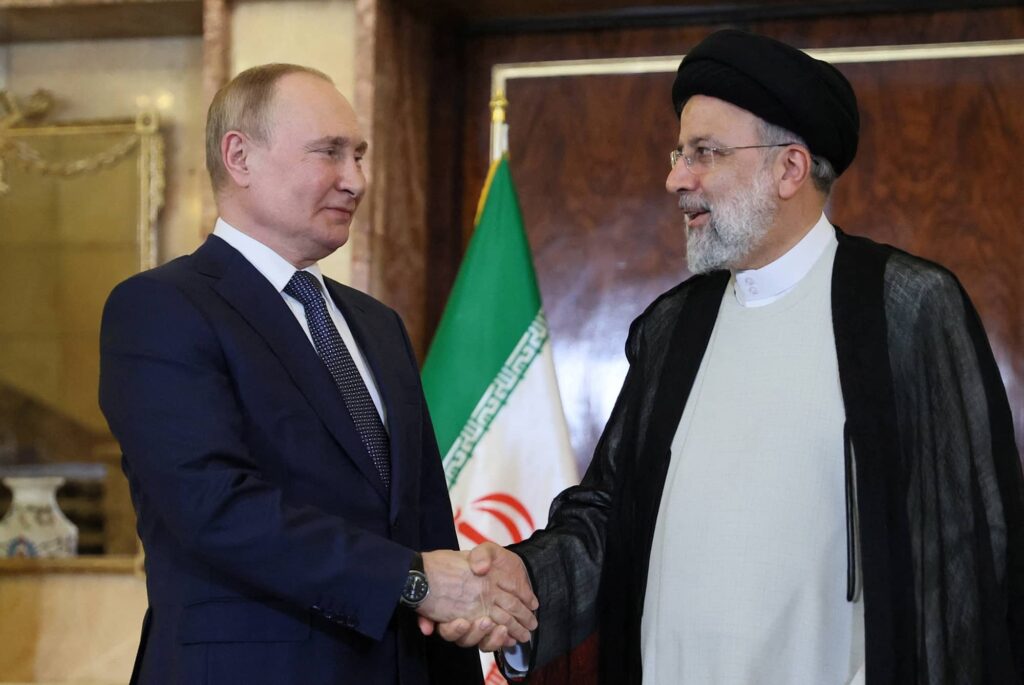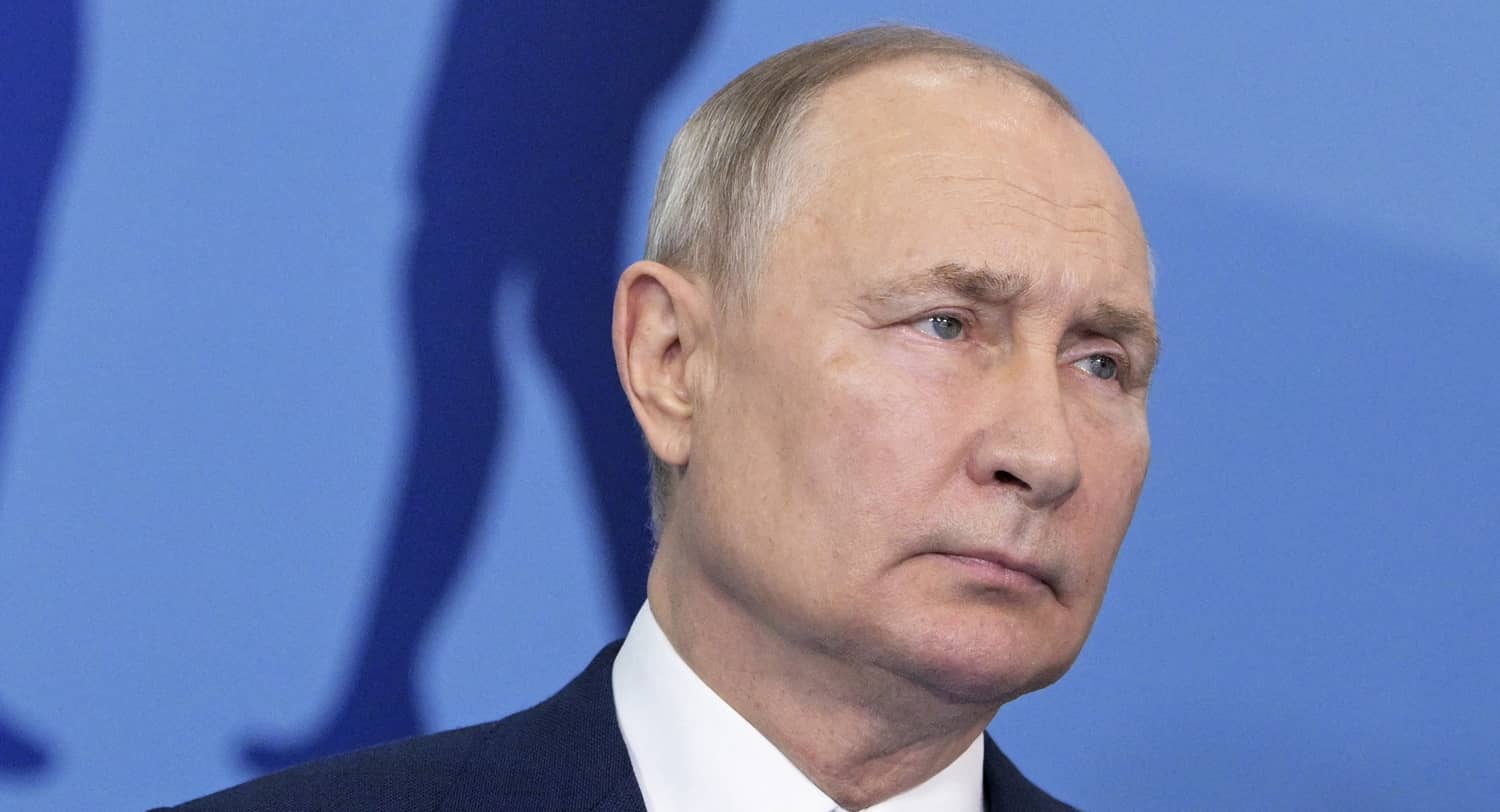If there is a winner emerging from the October 7 terrorist attack and subsequent war in Gaza, it is Vladimir Putin. On October 8, Ukraine’s President Volodymyr Zelensky said Russia is interested in starting a war in the Middle East to “undermine world unity.” Russia may not need to start a full-blown war, but Zelensky understands that the current escalation in the Middle East provides a distraction from Ukraine—and thus empowers Putin in pursuit of his global aims. But as Western leaders continue to assist Israel, they cannot afford to take their eyes off Putin.
Update on the War
Prior to the Hamas attack, and amid the protracted fight to pick a new Speaker of the House, the US Congress passed a stopgap funding bill that omitted aid to Ukraine. The Kremlin recognized this as a harbinger of war fatigue and looming Western disunity. While these events continue to play out, and the West begins to waffle in its support of Ukraine, Russia has launched what experts describe as Russia’s biggest ground offensive in months, seeking to recapture Andriivka, located south of Bakhmut and liberated earlier by the Ukrainian forces. If Russia succeeds, it could open a path further into Ukraine’s heartland.
To be sure, Russia’s losses in Ukraine have continued to mount, with some of the worst single-day losses of the year precisely around Andriivka this week, along with another strategic city the Russians have failed to capture, Avdiivka, which is outside the Russian-occupied city of Donetsk. It is far from a one-sided contest.
Ukraine had been far more successful in the earlier months of its counter-offensive than many commentators had understood or acknowledged. It faced the challenge of having to employ small unit tactics against superior, intricate multifaceted defenses – without air cover and despite continuous delays in weaponry supplies. Thus, the Ukrainian military appears to have returned to an attritional approach, which has proven more appropriate in dealing with the Russian army. This approach has raised the rate of attrition of the Russian military. If the rate continues, Russia’s ability to maintain its defensive positions may come into question. Combined with the Ukrainians puncturing of Russia’s defenses, which allowed them to pummel the Russian Black Sea Fleet and forced Russia to withdraw a large portion of it from Crimea, the momentum could significantly build against the Russian military.
But it’s too early to tell. In the face of the resurgent Russian offensive, it should come as no surprise we are again seeing a debate on the supply of long-range missiles and F-16 fighter jets. It will take time to understand the ramifications of Ukraine’s switch from a strategy of maneuver to attrition. But it is clear that the Kremlin is doubling down on war, as it has announced a commitment of resources reminiscent of the Soviet era. In its proposed budget for 2024, Russia intends to double its military and defense spending to $100 billion, or 6% of the country’s GDP; and as analysts noted, for the first time in modern history Russia’s defense spending will exceed social spending. Last April the IMF predicted 0.7 percent growth for the Russian economy for 2023. But even if this is an exaggeration, it is a far cry from the major contraction needed to persuade Putin to stop his war.

Improved Russian ties outside the West
While continuing the war in Ukraine, Moscow continues to strengthen its economic and defense relationships with countries either outwardly hostile to the US or neutral on the war on Ukraine.
Russia’s relationship with Iran, already on an upward trajectory for years before the invasion of Ukraine, has been edging closer to a defense partnership. For years Russia’s arms, including sophisticated anti-tank Kornet missiles already used in the present conflict, found their way to Hezbollah and Hamas; leaders of both organizations have made trips to Moscow. Most recently, in March 2023, Hamas leaders met with Russia’s Minister of Foreign Affairs Sergei Lavrov in Moscow. Palestinian President Mahmoud Abbas is also expected to come to Moscow in the near future. The costs of horizontally escalating by increasing tensions with the US in the skies over Syria do not outweigh the benefits to Moscow’s position in the region. Putin’s bid to mediate between Israel and Hamas may be laughable, but then again this is not about Israel nor being a genuine mediator.
Looking beyond the Middle East, the Balkans have been another flashpoint. Recent allegations of Russian weaponry and other documentation suggest Russia has had a hand in the uptick of violence between Serbian insurgents and the Kosovar police. Serbia’s troop deployment to Kosovo’s border was reminiscent to some extent of Russia’s military build-up prior to Ukraine invasion. This upheaval comes at a time when Slovakia is seeing a return of a populist anti-Ukraine leader as prime minister heading a coalition government. And in the South Caucasus, a region strategically vital to both Europe and the Middle East, the United States had been working on brokering a peace deal between Armenia and Azerbaijan. If it were to succeed it would represent a major strategic failure for Russia, and thus Putin has every reason to prevent it from occurring.
Finally, Russia’s Wagner forces remain embedded across Africa. They remain present in the Central African Republic, Mali and Libya; it is widely suspected Moscow also had a direct hand in the July coup in Niger. This coup will likely impact France’s influence in this region, and on their ability to import uranium from Niger. The death of Wagner leader Yevgeniy Prigozhin had little impact on the cascade of coups across the region. On the contrary, their presence indicates Moscow’s reliance on paramilitary groups to carry out foreign policy objectives.
Recent meetings with delegations from Nicaragua, Venezuela and Cuba indicate that Moscow hasn’t taken its eye off Latin America, where Wagner has proven useful in propping up friendly governments. Moscow maintains these partnerships and toys with the idea of increasing its military presence within the Western Hemisphere.
Towards a global strategy?
Moscow (like Beijing) seeks to upend the international system in order to compel a renegotiation of its terms. Putin has been clear he believes he is fighting an existential battle with the West. Western national security officials routinely acknowledge this reality—that Ukraine is not solely about Ukraine. But they should recognize the interconnectivity of these events. Separately they may not amount to much but taken together they present a far more formidable challenge than Western policymakers are willing to acknowledge.
Putin knows he is bogged down in Ukraine. He is thus seeking other areas where he can impose maximum costs on the West with minimal investment and effort. Western leaders need to think more strategically and long-term. Failure to deter leads to war. Policymakers must move beyond sanctions, define what matters to Moscow, and take actions which raise the costs to the Kremlin of pursuing a strategy of global chaos. They need to look at linkages across multiple theaters, and shifting power balances there, as the Kremlin does. Putin must be made to understand that the costs of escalation outweigh the benefits. Sending mixed signals to Putin, either by delay and waffling tactics in aid to Ukraine, or through undermining US policy commitments in the region, will send dangerous signals to Putin, Hamas and Iran.

